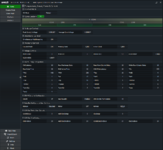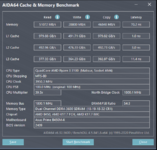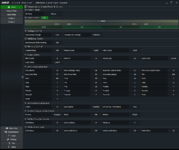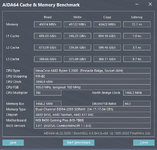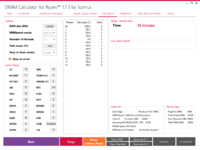Hi guys, I don't speak german so I'll use english, hope you don't mind.
I had a lot of problems trying to run a 32 GB Corsair Vengeance LPX ver. 4.32 at the advertised speed of 3200 Mhz (of course XMP didn't work), but finally after three days of almost non stop tweaking I managed to get it working at 1.34 V. I wanted to thank you all 'cause this forum helped me a lot (I had 0 OC knowledge), and to post my settings in case they could help others having the same problems (I saw a guy in this thread with the same issue that ended up buying another brand).
My MoBo is a Gigabyte B450 Aorus Elite v2, and my CPU a Ryzen 2600X. For stability testing I used TM5 with anta777 extreme's profile, and when everything was good I did three passes of Memtest86+. I didn't try to tighten the timings, just wanted to make it work at that speed, so probably there's room for improvement. So far it's been running fine for almost a week.
Anhang anzeigen 563302
Note that the image shows a VSOC of 1.0875 V, but I have it at 1.1 in the MoBo. Also, when leaving AddrCmdSetup on Auto the value it showed was 11, so I set them all to 11 and it seemed to provide some stability.
The most problematic settings were procODT, RTT and CAD. I had to tweak them a lot to avoid BSOD or BIOS not posting while trying different voltages. Then I had to tweak them even more because the tests usually failed around the first two minutes. On top of that I had to make some timing adjustements too. If I remember correctly, I had to fidle mostly with tRC, tFAW, TRDWR + tWRRD and tRFC (adjusting it for 350 ns seemed to give the best results).
All in all it was an interesting journey, although a bit frustrating, keeping in mind that supposedly it should have worked just activating the XMP or adjusting some simple stuff.
Now I have some questions that maybe somebody can answer:
- When I first managed to get it working at 1.34 V, after saving the BIOS profile I couldn't restart (black screen, fans blowing, no BIOS logo), so I thought maybe the RAM was overheated and began trying lower voltages. Eventually I tried again at 1.34, and just after the test finished OK, I restarted three times in a row with no issues. Then, when I saved the profile, I couldn't restart anymore, so that seemed to be the problem. I could restart again by unplugging the PSU, and since then it's working fine, does that make any sense to you? Should I be concerned?
- At some point I tried loosening the primary timings, and it was weird 'cause it all went worse. BOSD, POST issues, tests failing seconds after starting... how is that possible? Supposedly it should work better, right?
- Are the benchmarks OK? Do you think I should try to tighten the timings, or even increase the frequency? Will it be worthwhile or the gainings will be minimum?
- Is there anything I should try to adjust to avoid any possible long term damage or problem?




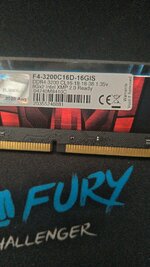
 .... SO-DIMM Adaptern auf einem Skylake System laufen.
.... SO-DIMM Adaptern auf einem Skylake System laufen. 

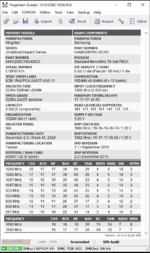
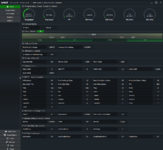

 i manage to get 3600 now on the way to make to 3800, pc keep do random shutdown at 3800,
i manage to get 3600 now on the way to make to 3800, pc keep do random shutdown at 3800,